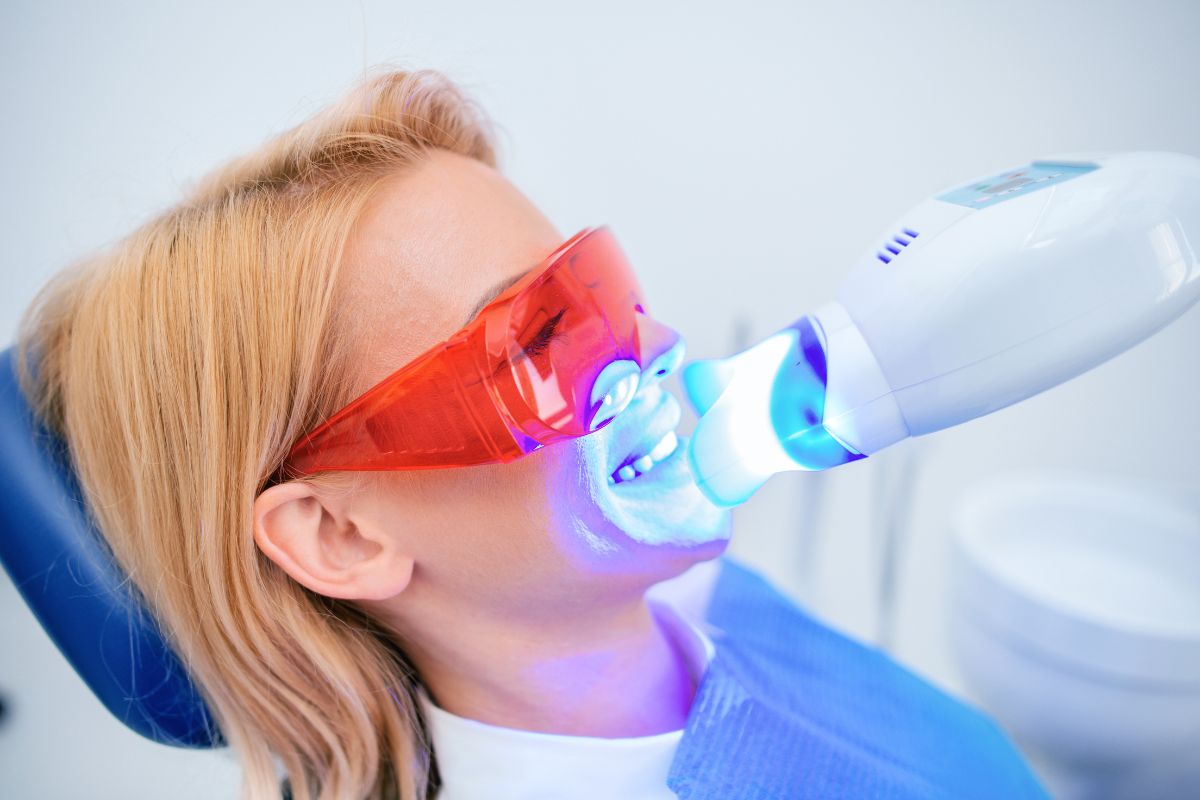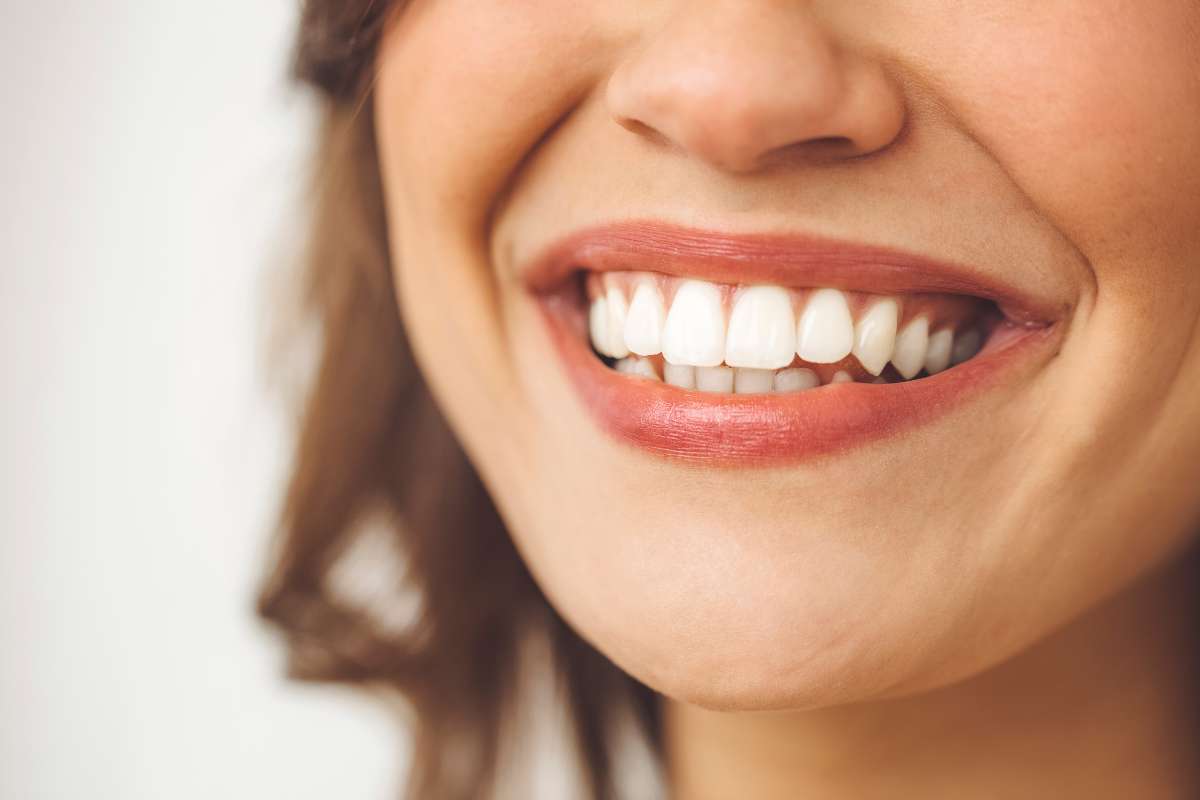Laser Whitening vs. Zoom Whitening – Your Complete Guide
Have you ever tried those store-bought teeth whitening kits and thought, 'Is that all there is?' We get it – sometimes, those results just don't cut it.
That's when many of us turn to professional teeth whitening procedures for a little extra sparkle. Typically, two popular choices are Zoom whitening and laser teeth whitening.
Zoom and lasers might sound high-tech and fancy, but let's break it down in plain English. They might seem similar, but trust us, there's more to this story than meets the eye.
So, here’s an in-depth comparison to help you make the right decision.

Key Similarities Between Laser Teeth Whitening and Zoom
If you talk about similarities, one thing is sure: laser and Zoom teeth whitening delivers far more noticeable results than over-the-counter or take-home whitening kits.
The improved whitening performance of these cosmetic treatments is credited to their higher hydrogen peroxide content. Store-bought teeth whitening kits can only contain up to 10% hydrogen peroxide.
On the other hand, laser treatments often use hydrogen peroxide concentrations ranging from 35% to 44%, while typical Zoom whitening gels contain 25%.
Here’s a snippet of a study that talks about oxidation or the main phenomenon that happens during teeth whitening.
In traditional teeth whitening, hydrogen peroxide or carbamide peroxide agents are applied to the surface of the teeth. These oxidative bleaching agents then permeate the tooth, interacting with stain molecules within the enamel and dentin layers (oxidation), ultimately resulting in the overall whitening effect. Due to enamel's thin and somewhat translucent characteristics, dentin becomes the primary focus for bleaching as it predominantly influences the overall tooth color.
Additionally, Zoom and laser teeth whitening procedures have similarities in their approaches to teeth whitening. They both rely on a specialized dental tool that emits either light or heat to trigger the activation of the bleaching gel.
We’ll discuss these mechanisms later in this article.
Key Differences Between Laser Teeth Whitening and Zoom
While both options involve using a special gel and a light source to lift stains and enhance your smile, there are some important distinctions you should be aware of.
Mechanism
The key distinction between laser teeth whitening and Zoom whitening lies in the method or mechanism used to activate the bleaching agent and protect the mouth and teeth.
In Zoom whitening, the activation of the bleaching is achieved with the Zoom Advanced Power Chairside Lamp, which emits a precise wavelength of light to boost the whitening process. On the other hand, a dental laser is employed to activate the whitening gel in a laser teeth whitening procedure.
During a Zoom whitening process, a specific feature or mechanism is in place to remove or block the emission of infrared (IR) radiation. By filtering out infrared emissions, Zoom whitening protects your mouth from excess heat, reducing gum irritation and enamel or pulp damage. Laser whitening, on the other hand, uses less heat and reduces the risk of tooth sensitivity.
In other words, laser whitening is more comfortable than zoom whitening in terms of the sensation you feel during and after the treatment. Zoom whitening may offer higher protection to your mouth but may cause discomfort and sensitivity in your teeth and gums, especially if you have thin enamel or gum recession.
Treatment time and side effects
Zoom whitening treats the patient's teeth simultaneously, ensuring faster teeth whitening. This process takes approximately 45 minutes, divided into three 15-minute sessions.
In contrast, laser teeth whitening adopts a one-tooth-at-a-time approach. It means the concentrated energy of the laser allows for a more prolonged but more rapid and intense whitening process, potentially achieving noticeable results in a single session.
Zoom whitening can be quite a hurdle for patients with sensitive teeth, especially when facing those three consecutive sessions. Many tend to find laser teeth whitening a more gentle and manageable option.
Remember, though, that the extent of any side effects is linked to the concentration of the peroxide bleach element, the treatment's duration, and the non-bleach elements in the product employed.
If you’re currently experiencing intense tooth sensitivity but wish to undergo dental cosmetic treatment, it's essential to consult your cosmetic dentist beforehand. Nevertheless, you can read this article to learn about the best teeth whitening options for sensitive teeth.
Which is more effective? Zoom or Laser Whitening?
Whether you opt for Zoom or laser whitening, both methods offer the promise of delivering noticeable results. The effectiveness of these treatments may differ from person to person. Typically, laser and Zoom teeth whitening can lighten the teeth up to eight shades, depending on the condition of the teeth and the treatment time.
Yet, the exact level of whiteness achieved may vary, influenced by your teeth's initial condition, the duration of treatment, and the specific shade guide your dentist employs.
Let's say Patient A has teeth that were pretty stained from drinking coffee and smoking for years. After getting Zoom teeth whitening, their teeth become much whiter, around six shades lighter, according to the dentist's guide.
Patient B also gets Zoom whitening, but the patient’s teeth weren't as discolored. After the treatment, their teeth get about three shades lighter on the same guide. So, both patients saw good results, but how much their teeth improved depended on how stained they were in the beginning.
Which teeth whitening treatment should you choose?
The choice between Zoom and laser whitening depends on your needs, budget, goals, preferences, and circumstances. Either option can deliver as promised. But to make the most out of your decision, here are essential considerations:
Coverage and speed
Zoom whitening treats all your teeth simultaneously, ensuring consistent results, whereas laser whitening targets one tooth at a time. The former may offer greater convenience and uniformity, while laser whitening allows for more precision and customization.
Zoom whitening is notably faster than laser whitening, as it can be completed in a single session lasting about 45 minutes. Laser whitening may require more time, involving individual heating of each tooth for approximately 15 to 20 minutes. Depending on the extent of staining and the number of teeth being treated, a laser whitening session can take longer and require multiple appointments. If you have a tight schedule, Zoom could be the preferable choice.
Suppose you want to address isolated teeth stains, and you’re particular with precision and customized treatment for individual teeth. In that case, laser whitening may be the best option for achieving your desired results.
Comfort
Generally, laser teeth whitening is often considered more comfortable for people with tooth sensitivity compared to other teeth whitening methods, including traditional bleaching gels or some light-activated systems like Zoom whitening. Laser whitening employs less heat during the procedure, reducing the risk of causing or exacerbating tooth sensitivity.
Zoom whitening may use a unique mechanism that filters out significant infrared emissions to minimize heat exposure and reduce discomfort. However, some may still find Zoom whitening less comfortable than laser whitening if they have thin enamel or gum recession.
But if you do not experience significant tooth sensitivity or gum recession, Zoom whitening can be a viable and convenient choice. It can still deliver excellent results for those without these concerns.
Cost
Laser whitening typically comes with a higher price tag than Zoom whitening, given its need for more advanced equipment and specialized expertise. Zoom whitening, being more straightforward in technology and procedure, is more budget-friendly and widely accessible. If you're mindful of your budget, Zoom may be more cost-effective.
If you need further information about teeth whitening costs, here is a complete guide.
Teeth Whitening in Culver City, CA
In this article, we have compared two popular professional teeth whitening methods: laser and Zoom. We’ve looked at how they work, how long they take, their effects, and their effectiveness.
You just learned that both methods could provide noticeable results but have different advantages and disadvantages.
Laser whitening guarantees greater protection from tooth sensitivity than zoom whitening. However, it is also more expensive and may take longer than zoom whitening. On the one hand, Zoom whitening can protect your mouth from excess heat, reducing gum irritation and enamel or pulp damage. It is also faster and more consistent than laser whitening, as it whitens all your teeth simultaneously.
Zoom whitening may be a good option for those on a tight schedule for the treatment consisting of three sessions that take about 15 minutes each. On the other hand, laser whitening treats one tooth at a time, but its vital energy enables a faster and more intense process, potentially delivering noticeable results in one session.
These guidelines serve as valuable insights, but you must remember that consulting a cosmetic dentist is key to choosing the most appropriate teeth whitening alternative.
To explore the best options for your bright, confident smile, contact us at United Dental Care, your trusted dentist in Culver City, California. Together, we can help you achieve that dream Hollywood pearly whites!




 By:
By: 


